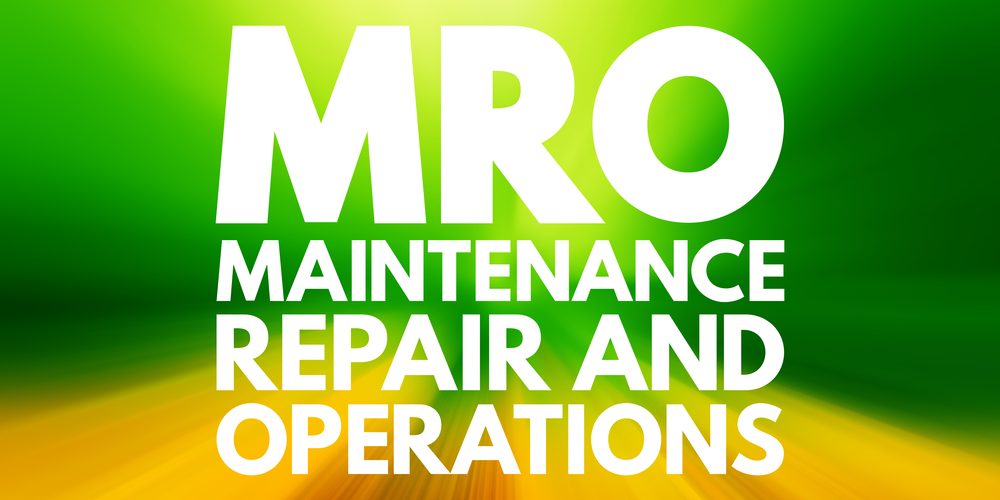While regular aircraft enthusiasts are more likely to be focused on the performance potential of aeroplanes, military and civilian air fleet operators tend to be much more interested in their ease of maintenance. Indeed, regular maintenance is a costly but necessary exercise for ensuring the safe operations of the air fleets the modern world depends on.
The safety and reliability concerns associated with aircraft mean that they have a somewhat different maintenance approach from other complex systems. Traditional systems maintenance tends to look into issues when they come up—an approach that is inadequate when potentially hundreds of lives are on the line. This means that aircraft maintenance has to be preventive rather than reactive to avoid serious problems during flight operations.
The frequency and coverage of preventive maintenance will, of course, depend on the aircraft type and the specific demands placed on it. However, certain aircraft parts need more attention than others. With some aircraft featuring millions of discrete components, it also makes sense for maintenance crews to prioritise maintenance on the parts most needed to ensure the safety of the crew and passengers. Here are some of the aircraft components that have the most frequent maintenance cycles:
1. Airframe
The airframe is generally used to describe the framework and body of the aircraft, usually not including the engine. Airframes can undergo significant stresses during normal operations, and as such, regular inspections are vital to detect signs of corrosion or material fatigue. Specialised technicians meticulously examine structural components for cracks, dents, or other unwanted wear to ensure that the aircraft can continue to fly. Rivet lines and other hard-to-access areas may be checked with non-destructive testing methods to guarantee an airframe’s airworthiness.
2. Engines
Whether you’re talking about jet, turboprop, piston, or rotor aircraft, the engines they use are all complex mechanical systems. Regardless of the aircraft type, engines always require meticulous care to ensure optimal performance and safety of those on board.
Engine inspection regimes will differ depending on the engine type. Generally, however,
inspections involve checking for oil leaks, monitoring fluid levels, and examining critical components for wear. Additionally, technicians may run an engine vibration analysis to identify potential issues before they escalate into major failures mid-flight.
3. Propellers/Fans
While propellers and jet engine blades serve very different functions, they’re both essential for the propulsion of different aircraft types. These components are vulnerable to nicks and dents from foreign objects on the ground. Furthermore, their constant movement can result in stresses that make these parts essentially consumable. Without frequent checks, these components can degrade beyond acceptable limits, resulting in efficiency losses or even the loss of the aircraft.
4. Electrical Systems
Modern aircraft feature incredibly complex electrical systems for controlling avionics, communication equipment, and life support systems, among many others. Indeed, some aircraft even rely on electrical systems to actuate flight surfaces, making them essential for safe flight in these aircraft types.
Technicians conducting routine inspections may look at wiring integrity, connector tightness, and battery condition. They might also conduct load tests and troubleshooting to spot and fix any malfunction.
5. Hydraulic Systems
In most aircraft types, hydraulic systems are responsible for actuating such components as landing gear, flight control surfaces, and brakes. Routine inspections focus on detecting hydraulic fluid leaks, assessing system pressure, and verifying hydraulic component integrity. Regular fluid replenishment schedules may be enacted to guarantee optimal hydraulic system reliability during flight.
6. Avionics
Avionics encompass the electronic systems and instrumentation in the aircraft cockpit. Regular calibration and testing of avionics equipment keeps instruments accurate and helps crews fly with confidence.
7. Landing Gear
Larger aircraft usually have retractable landing gear, as aircraft generally have a much more aerodynamic profile with their wheels retracted, which saves fuel and extends the aircraft’s range. The tradeoff for this added efficiency, however, is a high degree of complexity. Regular inspections on landing gear components are therefore needed to ensure that aircraft can land safely.
Technicians specialising in landing gear generally focus on tyre tread wear, brake pad condition, and hydraulic fluid leaks. They may also look at the integrity of landing gear struts and shock absorbers.
8. Fuel System
The aircraft fuel system comprises fuel tanks, lines, pumps, and associated components critical for engine operation. Maintenance crews will check filters and replace them at prescribed intervals to prevent fuel contamination. System pressure tests may also be run to identify leaks or pressure irregularities so that engines can have consistent inflows of fuel.
9. Life Support System
Aircraft that operate above the troposphere require life support systems to supply crew and passengers with oxygen at the right pressures. In pressurised aircraft, this oxygen is usually extracted from outside then filtered and pressurised to give the inside of the aircraft an environment similar to that of sea level. In addition, some emergency air supplies may be available in onboard oxygen tanks.
Scheduled maintenance of these systems usually involves checking air system functions, verifying oxygen cylinder integrity, leak detection, and mask testing. Flow rate checks may also be conducted to ensure the system’s reliability, particularly during emergencies.
10. Emergency Equipment
Lastly, regular preventive maintenance involves checking emergency equipment availability. This can include life vests and inflatable slides on most airplanes as well as parachutes for some military aircraft. Technicians will look at equipment expiration dates and conduct functionality tests, meticulously inspecting for tears, punctures, or other issues that might endanger crew and passengers.
Maintenance Means Investing in Air Fleet Safety and Performance
Keeping an air fleet at full readiness requires a dedicated, well-equipped team of technicians working on all the components described above. However, good preventive maintenance is not just down to teams of aircraft mechanics. Air fleet operators need to make it a priority, viewing it as essential to their overall mission.
Prioritising preventive maintenance makes sense, as it tends to increase aircraft utilisation and cost savings. Furthermore, focusing on doing the right thing guarantees the safety of crews, passengers, and cargo, allowing air fleets to operate indefinitely. Regardless of whether one is looking at military or civilian aviation, investments in preventative maintenance are undoubtedly a key part of running a successful air operation.






